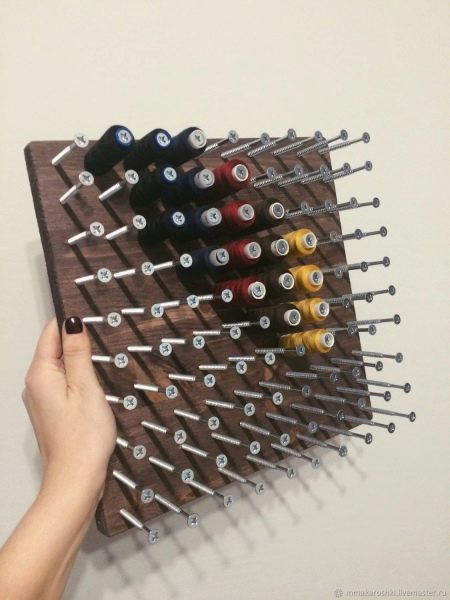Features of thread holders
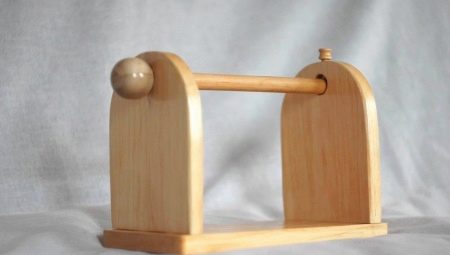
Sewing is one of the interesting and rather complex hobbies that a large number of people are engaged in. There are those who sew for their pleasure, and there are those who do it professionally and every day. To make the sewing process comfortable and not cause discomfort, it is important to organize all the nuances correctly. One of the most problematic points is the placement of the sewing thread. In order to conveniently arrange all the threads and use them without problems, it is best to have holders that will help you find the right color, the number of the spool and quickly use it.
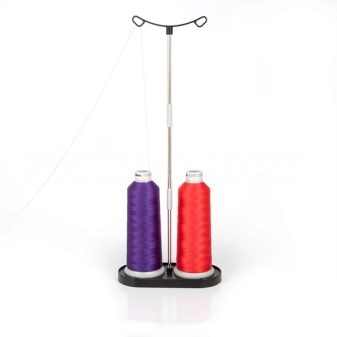
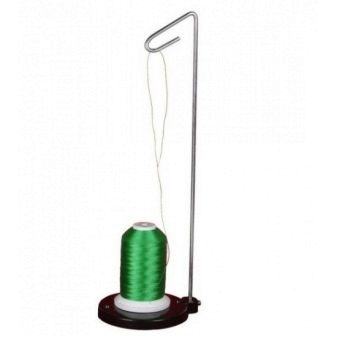
Views
The sewing process requires a large number of threads, which differ in thickness, have a different color, as well as the length, which affects the size of the bobbin. So that a seamstress can quickly find the right threads, it is worth considering a storage system. There are a number of options on sale, but if you wish, you can build such a product with your own hands.

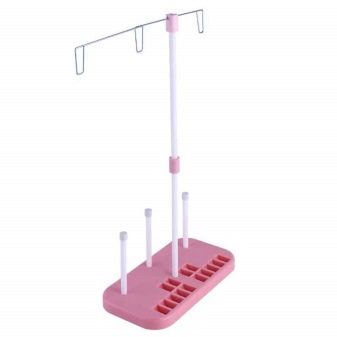
The thread holder can be of the following types.
- A stand that has thread recesses and dividers. Such items can be made from thicker or thinner plastic. The stand, made of durable plastic, can accommodate a large number of threads, which are laid out in separate niches, taking into account the division into colors and sizes. Such items can be seen in sewing supply stores.

- Metal structures with small spikes on which the coils are put on. Such products are made to order, but if you wish, you can try to make them yourself. The lattice metal sheet is complemented by hooks without rounding at the end to make it easy to take off and put on spools. These holders are also often sold in art supply stores.
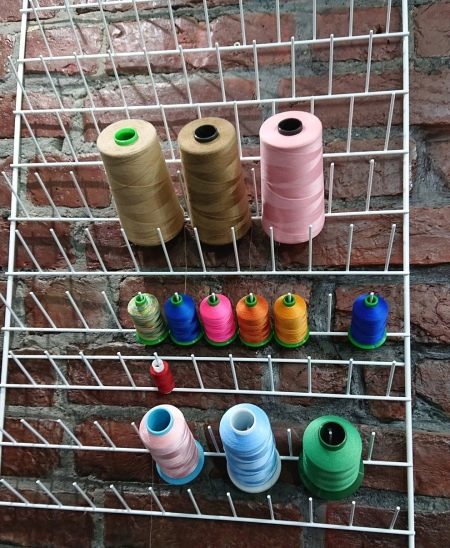
- Horizontal thread storage. Often this is a wooden board of different sizes, into which nails can be driven in, screws are fixed, thin wooden sticks are glued in, on which coils are put on. It is convenient to put on such a stand not only small coils. The product can also be used to accommodate a large reel, which takes up a lot of space and has an irregular shape. This option is easy to make yourself, because it is one of the most popular for homemade creation.

- Vertical stand for spools or bobbins. It consists of side holders on which horizontal strips of such width are attached so that the coil can be easily put on them.
This option is convenient for those cases when there is no need to often remove the threads from the holder, but you need to cut small pieces from them.
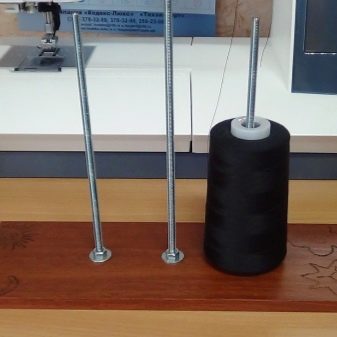
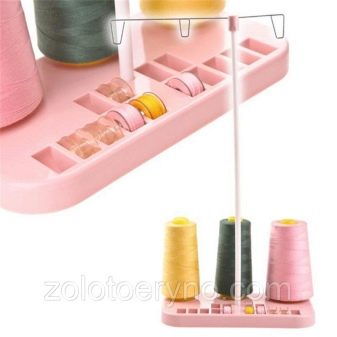
Thanks to the availability of the necessary tools and the ability to work with the necessary materials, you can make a wide variety of thread stands: from simple to very beautiful. The most important criterion for such a product is its ease of use.
Manufacturers overview
If there is a desire and opportunity to buy a thread holder, then you should pay attention to the models from the following manufacturers.
- Madeira Aeroflock. This is a holder in which there are special holes where threads are inserted. They can be positioned as it is convenient. The product consists of three rows and holds 96 standard spools.
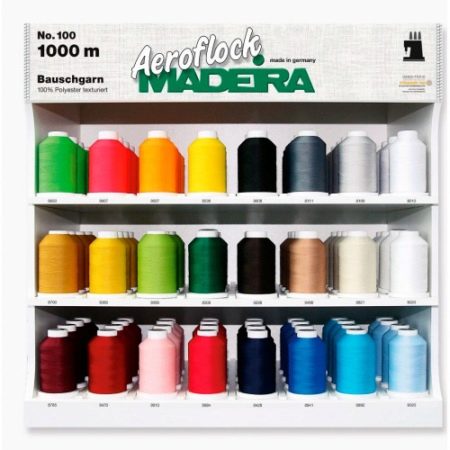
- Aurora. A large stand that easily accommodates all kinds of threads that can be used for sewing and creativity.
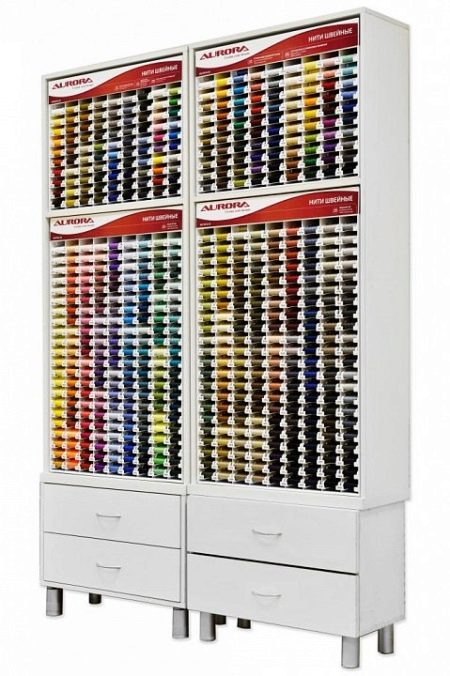
- Madeira Metallic. A small holder in which the coils are placed horizontally. For threads, there are special niches where you can place a specific color or number of the bobbin.
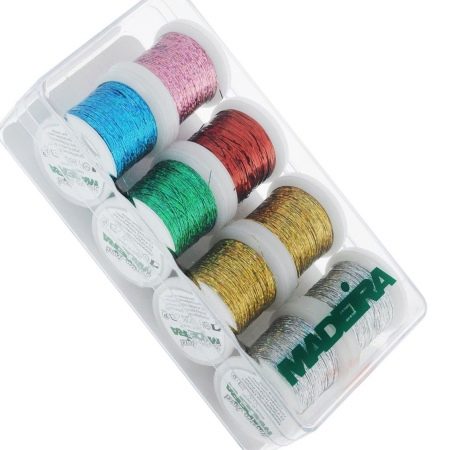
- Hemline. Wooden stand that allows you to place threads on vertical wooden holders. Due to the presence of several tiers, one product can accommodate up to 60 spools.
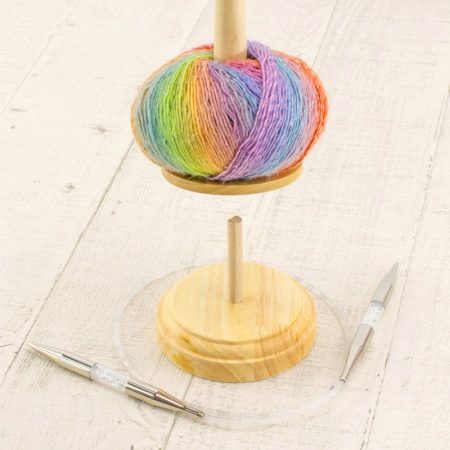
- DMC floss thread stand. This is a metal round stand with long hooks without rounding at the ends. Threads of any color and thickness are strung on them.
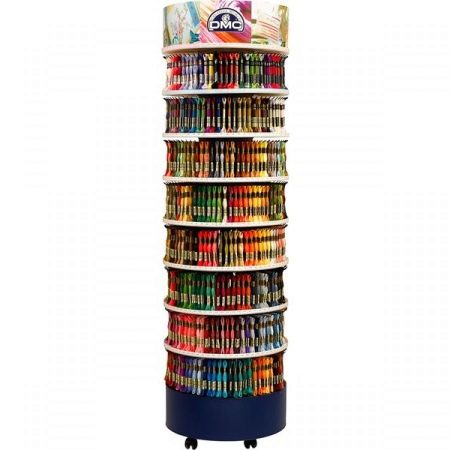
The variety of thread holders is quite large, but prices can be high, so you should try to make such a stand yourself.
How to do it yourself?
To build a comfortable thread stand, you need to find diagrams in which the algorithm of actions will be indicated. There are templates and master classes on the Internet that you can use to make holders for threads quickly and efficiently. The most simple and convenient to work with are wooden products.
To make a wooden stand for coils, you must use the following instructions:
- prepare the necessary tools: a wooden canvas, nails or screws, a screwdriver or hammer;
- the wooden surface must be sanded with sandpaper to exclude the possibility of splinters on the seamstress's hands;
- if the size of the canvas suits, it can be left as it is, if it is too large, then with the help of a saw or hacksaw, you can cut off all unnecessary;
- with a pencil and a ruler, it is necessary to mark the lines for the subsequent placement of nails or self-tapping screws, then mark the desired place with dots, maintaining the same distance between the marks;
- screw in self-tapping screws or drive in nails at the marked points.
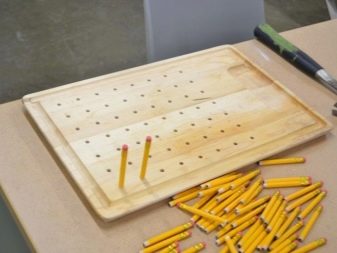

If the thread support will be placed at a right angle, then it is better to leave such a holder in a horizontal position and place it on some working surface. If you make a slight slope when screwing in self-tapping screws or hammering in nails, you can hang the holder on the wall, which will save usable space. If you do not want to use metal holders in the form of nails or self-tapping screws, you can use wooden sticks. Holes are drilled in the wooden base, and the coil supports are glued into them with the help of liquid glue.
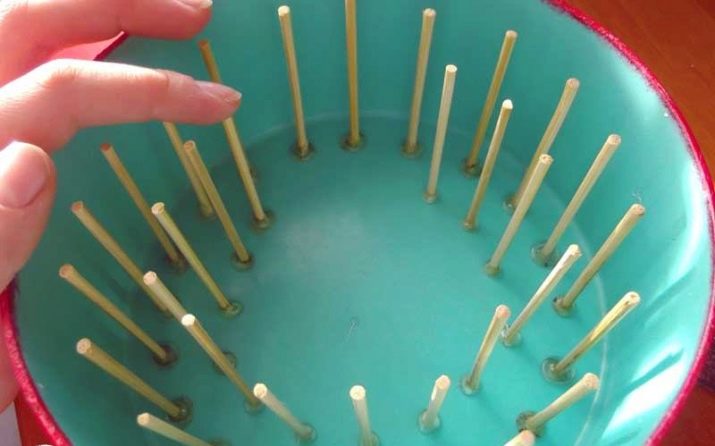
A large piece of wood can be replaced with fairly thin slats. The thickness of such strips should not be less than the thickness of the coil. All slats are cut so that their length is the same. Sidewalls are created from two strips, to which horizontal strips are attached. On this structure, you also need to mark the places where the thread holders will be, and use a hammer, screwdriver or quick fix glue to fix them in place. These products are usually placed on walls, they take up a minimum of space and look neat in any room.
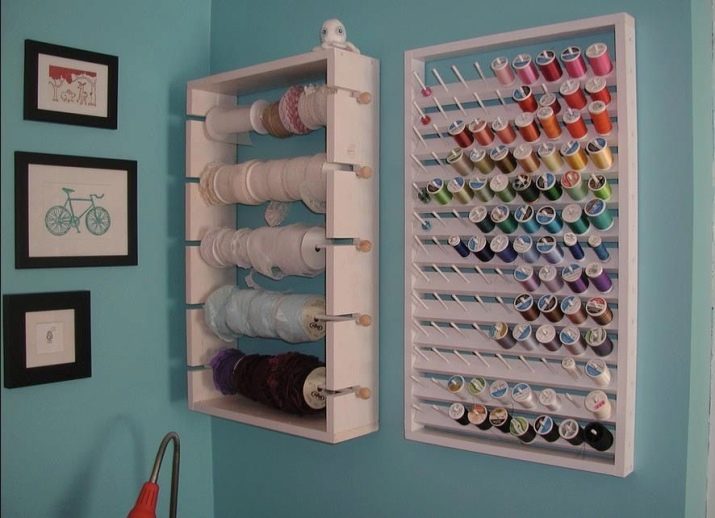
There are simpler methods for which plastic cans and containers are used, as well as more complex options that require sawing, burning, and other skills.
To make a beautiful and comfortable thread stand, you should decide on the number of spools, choose the most convenient way of placing the threads and find a place where the finished product will stand or hang.
